Orit Oz Recent Posts
Can Inbound Marketing Really Impact on Your Bottom Line?
By
Orit Oz
, 08/03/2019
Bermad, a kibbutz-based company manufacturing water control valves, built itself into a successful global concern from the ground up.
min read
Bermad, a kibbutz-based company manufacturing water control valves, built itself into a successful global concern from the ground up. Here’s what Ofir Marx, VP Marketing at Bermad had to say about inbound marketing and what it’s done for the company’s business.


The conversation has changed: From top down to two-way communication
“Today, we can communicate directly with customers,” says Marx. “In the past, our way of communicating with customers was top down. HQ communicated to its subsidiaries, who communicated to the dealers, who in turn, communicated to the end users. We never got direct feedback, and even if we did, it had passed through three to four different hands and got filtered along the way. That’s changed. Now by publishing blogs, case studies, and white papers, sending out emails, and posting to social media, we have the ability to deliver messages directly to the end user and get feedback.“
Generating leads, assessing quality
Leads are collected on landing pages with targeted calls to action (CTAs). By asking qualifying questions, Bermad is able to assess the quality of the leads received. The results show that 35% are sales qualified leads (SQL), 30% are marketing qualified leads (MQL), and the balance are service requests, spare parts or vendors looking to sell the company something. In short: More than 60% leads are relevant enquiries.Key goals versus results
At the beginning of the process, Bermad set some goals:- Increase site traffic to 20,000 Moved from 12,000 to 20,000 website visitors per month in less than 2 years
- Generate 500 leads per month Approximately 200 leads per month now and it’s rising
- Added Revenue of $1,000,000 per year Reached $700,000 in 2017; anticipate higher in 2018

Are we getting it right?
The ability to speak directly to the marketplace and understand what they are interested in and what questions they ask, enables the company to understand whether they need to do anything differently.What’s next?
Marx believes that the awareness and exposure that is being gained is very important, and it’s only the beginning. There’s still much to be done, from increased involvement in Linked In discussion groups to targeted campaigns in specific locations, as well as blogging in other languages such as Spanish and Portuguese.Leveraging the power of marketing automation
The company is just beginning to benefit from the powerful marketing tools available on HubSpot including lead scoring and nurturing. Having tripled the amount of contacts, there is a wealth of potential customers to cultivate, taking them from the awareness and consideration stages through to making the decision to purchase.It takes time, effort and investment
Today, all Bermad’s divisions are involved, with 4-5 people at HQ contributing to content creation as well as support from professionals at the company’s various subsidiaries. Blogs are published on a monthly basis for all four segments (waterworks, irrigation, fire protection and building & construction), supported by email blasts, newsletters and ongoing social media posts. Campaigns are run to support product launches, exhibitions and special events. All marketing activities are integrated into Bermad’s CRM system, allowing the sales team to see a 360° view of potential customers and enabling them to close more deals. “Today, nobody asks why we are doing it,” notes Marx. “We’re just beginning to see the benefits.”10, 9, 8…. And counting down marketing trends for 2018
By
Orit Oz
, 18/01/2018
The New Year is here and we put together a countdown of marketing trends that will affect B2B brands in 2018!
min read
The New Year is officially here and we decided to put together a countdown of marketing trends that will affect B2B brands in 2018!
Here goes…..
 The trend for visualization through video, images and infographics will get stronger. In fact, predictions indicate that by 2019, video will account for 80% of consumer internet traffic. And, according to Facebook, live is even better and live video gets 3x more views and is expected to dramatically increase in 2017. B2B brands can use live videos in lots of different ways, including at events to give followers a behind-the-scenes look, host interviews with key influencers, and launch promotions.
The trend for visualization through video, images and infographics will get stronger. In fact, predictions indicate that by 2019, video will account for 80% of consumer internet traffic. And, according to Facebook, live is even better and live video gets 3x more views and is expected to dramatically increase in 2017. B2B brands can use live videos in lots of different ways, including at events to give followers a behind-the-scenes look, host interviews with key influencers, and launch promotions.
 Big data’s been a big trend for many years now, but it’s become more accessible because of machine learning and AI. As more and more platforms and marketing methods start incorporating big data, the use of big data is becoming an essential part of marketing and understanding what the consumer wants and when is worth its weight in gold.
Big data’s been a big trend for many years now, but it’s become more accessible because of machine learning and AI. As more and more platforms and marketing methods start incorporating big data, the use of big data is becoming an essential part of marketing and understanding what the consumer wants and when is worth its weight in gold.
 Transparency and trust have become a major component of the customer’s decision-making process as customers’ become less and less tolerant towards fake news and reviews, or in other words, exaggerated marketing. Brands should invest in community management to keep the online community engaged, informed and happy; and can use technology advances such as virtual reality (VR) and augmented reality (AR) to connect with users on a deeper, more emotional level.
Transparency and trust have become a major component of the customer’s decision-making process as customers’ become less and less tolerant towards fake news and reviews, or in other words, exaggerated marketing. Brands should invest in community management to keep the online community engaged, informed and happy; and can use technology advances such as virtual reality (VR) and augmented reality (AR) to connect with users on a deeper, more emotional level.
 There is no arguing with the fact that content is still king. However, there is a need to deal with the challenge of oversaturation. Now that most brands have some sort of content strategy and social media networks are full of content, the focus needs to shift slightly. Rather than fighting for more visibility, marketers will need to think out of the box and stand out in space that is already taken. This is where influencers come into the picture. By leveraging the networks of influencers who already have a “captive” audience, marketers can increase their online influence and start to reduce the volume of content produced, or in other words, go for quality and not quantity.
There is no arguing with the fact that content is still king. However, there is a need to deal with the challenge of oversaturation. Now that most brands have some sort of content strategy and social media networks are full of content, the focus needs to shift slightly. Rather than fighting for more visibility, marketers will need to think out of the box and stand out in space that is already taken. This is where influencers come into the picture. By leveraging the networks of influencers who already have a “captive” audience, marketers can increase their online influence and start to reduce the volume of content produced, or in other words, go for quality and not quantity.
 Born between 1995 and 2010, this consumer group marks a substantial shift that will affect all brands. These digital natives are different from millennials and they will have increased buying power in the near future. Keep an eye out on key platforms such as Snapchat and Instagram when targeting this young and highly dynamic demographic.
Born between 1995 and 2010, this consumer group marks a substantial shift that will affect all brands. These digital natives are different from millennials and they will have increased buying power in the near future. Keep an eye out on key platforms such as Snapchat and Instagram when targeting this young and highly dynamic demographic.
 We cannot emphasize this one enough. Consumers are spending most of their time on their mobile phones. In fact, in 2018, mobile video consumption is expected to grow by 25% and ad spending on mobile video will reach 18 billion dollars next year, surpassing desktop. Even Google has even given priority to pages that are AMP optimized (Accelerated Mobile Pages). So the bottom line is that if you haven’t yet done so, you need to start optimizing your marketing strategies, websites and ads for mobile.
We cannot emphasize this one enough. Consumers are spending most of their time on their mobile phones. In fact, in 2018, mobile video consumption is expected to grow by 25% and ad spending on mobile video will reach 18 billion dollars next year, surpassing desktop. Even Google has even given priority to pages that are AMP optimized (Accelerated Mobile Pages). So the bottom line is that if you haven’t yet done so, you need to start optimizing your marketing strategies, websites and ads for mobile.
 While it’s still important to know how many people visited your site and from where, at the end of the day it’s all about sales. For this reason, it’s important to track conversions and revenue, in other words, who buys and at what stage of the buyer’s journey. In this way, it becomes easier to track your return of investment on digital marketing.
While it’s still important to know how many people visited your site and from where, at the end of the day it’s all about sales. For this reason, it’s important to track conversions and revenue, in other words, who buys and at what stage of the buyer’s journey. In this way, it becomes easier to track your return of investment on digital marketing.
 The digital age brings with it the need to take multiple aspects including data privacy into account. In May 2018, the General Data Protection Regulation (GDPR) will take affect with the aim of improving protection for EU citizens and adapting privacy and data laws to the digital age. This will require marketers to think and act very differently as it will affecter multiple factors in a marketer’s focus, some of which require organizations to start preparing immediately.
The digital age brings with it the need to take multiple aspects including data privacy into account. In May 2018, the General Data Protection Regulation (GDPR) will take affect with the aim of improving protection for EU citizens and adapting privacy and data laws to the digital age. This will require marketers to think and act very differently as it will affecter multiple factors in a marketer’s focus, some of which require organizations to start preparing immediately.
 Native advertising is expected to drive more than 74 percent of all add revenue by 2021. Because of their more natural placement and format, these ads usually get more exposure and engagement than traditional banner ads. However, these ads need to be written according to the preferences of those seeing the ads, and they should also be linked to “smart content” that is adapted to audiences based on NI, cookies and an in-depth understanding of target audiences.
Native advertising is expected to drive more than 74 percent of all add revenue by 2021. Because of their more natural placement and format, these ads usually get more exposure and engagement than traditional banner ads. However, these ads need to be written according to the preferences of those seeing the ads, and they should also be linked to “smart content” that is adapted to audiences based on NI, cookies and an in-depth understanding of target audiences.
 Even though we already mentioned this one in a previous point, we think it deserves to be repeated for emphasis. As more and more people experience the FOMO (Fear of Missing Out) effect, marketers need to create unique and original content that makes potential customers feel like they’re the first to know. For example, content that involves a “behind-the-scenes look”, an exclusive with an influencer, or a sneak preview of upcoming projects and product launches can be used to really create a buzz and get potential consumers to engage “before” anyone else does.
Even though we already mentioned this one in a previous point, we think it deserves to be repeated for emphasis. As more and more people experience the FOMO (Fear of Missing Out) effect, marketers need to create unique and original content that makes potential customers feel like they’re the first to know. For example, content that involves a “behind-the-scenes look”, an exclusive with an influencer, or a sneak preview of upcoming projects and product launches can be used to really create a buzz and get potential consumers to engage “before” anyone else does.
10 – Visual content
 The trend for visualization through video, images and infographics will get stronger. In fact, predictions indicate that by 2019, video will account for 80% of consumer internet traffic. And, according to Facebook, live is even better and live video gets 3x more views and is expected to dramatically increase in 2017. B2B brands can use live videos in lots of different ways, including at events to give followers a behind-the-scenes look, host interviews with key influencers, and launch promotions.
The trend for visualization through video, images and infographics will get stronger. In fact, predictions indicate that by 2019, video will account for 80% of consumer internet traffic. And, according to Facebook, live is even better and live video gets 3x more views and is expected to dramatically increase in 2017. B2B brands can use live videos in lots of different ways, including at events to give followers a behind-the-scenes look, host interviews with key influencers, and launch promotions.
9 – Big (big) data
 Big data’s been a big trend for many years now, but it’s become more accessible because of machine learning and AI. As more and more platforms and marketing methods start incorporating big data, the use of big data is becoming an essential part of marketing and understanding what the consumer wants and when is worth its weight in gold.
Big data’s been a big trend for many years now, but it’s become more accessible because of machine learning and AI. As more and more platforms and marketing methods start incorporating big data, the use of big data is becoming an essential part of marketing and understanding what the consumer wants and when is worth its weight in gold.
8 – Authenticity
 Transparency and trust have become a major component of the customer’s decision-making process as customers’ become less and less tolerant towards fake news and reviews, or in other words, exaggerated marketing. Brands should invest in community management to keep the online community engaged, informed and happy; and can use technology advances such as virtual reality (VR) and augmented reality (AR) to connect with users on a deeper, more emotional level.
Transparency and trust have become a major component of the customer’s decision-making process as customers’ become less and less tolerant towards fake news and reviews, or in other words, exaggerated marketing. Brands should invest in community management to keep the online community engaged, informed and happy; and can use technology advances such as virtual reality (VR) and augmented reality (AR) to connect with users on a deeper, more emotional level.
7 – Content and influencer networks
 There is no arguing with the fact that content is still king. However, there is a need to deal with the challenge of oversaturation. Now that most brands have some sort of content strategy and social media networks are full of content, the focus needs to shift slightly. Rather than fighting for more visibility, marketers will need to think out of the box and stand out in space that is already taken. This is where influencers come into the picture. By leveraging the networks of influencers who already have a “captive” audience, marketers can increase their online influence and start to reduce the volume of content produced, or in other words, go for quality and not quantity.
There is no arguing with the fact that content is still king. However, there is a need to deal with the challenge of oversaturation. Now that most brands have some sort of content strategy and social media networks are full of content, the focus needs to shift slightly. Rather than fighting for more visibility, marketers will need to think out of the box and stand out in space that is already taken. This is where influencers come into the picture. By leveraging the networks of influencers who already have a “captive” audience, marketers can increase their online influence and start to reduce the volume of content produced, or in other words, go for quality and not quantity.
6 – Shift of focus from millennials to Generation Z
 Born between 1995 and 2010, this consumer group marks a substantial shift that will affect all brands. These digital natives are different from millennials and they will have increased buying power in the near future. Keep an eye out on key platforms such as Snapchat and Instagram when targeting this young and highly dynamic demographic.
Born between 1995 and 2010, this consumer group marks a substantial shift that will affect all brands. These digital natives are different from millennials and they will have increased buying power in the near future. Keep an eye out on key platforms such as Snapchat and Instagram when targeting this young and highly dynamic demographic.
5 – Mobile, mobile, mobile
 We cannot emphasize this one enough. Consumers are spending most of their time on their mobile phones. In fact, in 2018, mobile video consumption is expected to grow by 25% and ad spending on mobile video will reach 18 billion dollars next year, surpassing desktop. Even Google has even given priority to pages that are AMP optimized (Accelerated Mobile Pages). So the bottom line is that if you haven’t yet done so, you need to start optimizing your marketing strategies, websites and ads for mobile.
We cannot emphasize this one enough. Consumers are spending most of their time on their mobile phones. In fact, in 2018, mobile video consumption is expected to grow by 25% and ad spending on mobile video will reach 18 billion dollars next year, surpassing desktop. Even Google has even given priority to pages that are AMP optimized (Accelerated Mobile Pages). So the bottom line is that if you haven’t yet done so, you need to start optimizing your marketing strategies, websites and ads for mobile.
4 – Shift in KPIs
 While it’s still important to know how many people visited your site and from where, at the end of the day it’s all about sales. For this reason, it’s important to track conversions and revenue, in other words, who buys and at what stage of the buyer’s journey. In this way, it becomes easier to track your return of investment on digital marketing.
While it’s still important to know how many people visited your site and from where, at the end of the day it’s all about sales. For this reason, it’s important to track conversions and revenue, in other words, who buys and at what stage of the buyer’s journey. In this way, it becomes easier to track your return of investment on digital marketing.
3 – Data protection
 The digital age brings with it the need to take multiple aspects including data privacy into account. In May 2018, the General Data Protection Regulation (GDPR) will take affect with the aim of improving protection for EU citizens and adapting privacy and data laws to the digital age. This will require marketers to think and act very differently as it will affecter multiple factors in a marketer’s focus, some of which require organizations to start preparing immediately.
The digital age brings with it the need to take multiple aspects including data privacy into account. In May 2018, the General Data Protection Regulation (GDPR) will take affect with the aim of improving protection for EU citizens and adapting privacy and data laws to the digital age. This will require marketers to think and act very differently as it will affecter multiple factors in a marketer’s focus, some of which require organizations to start preparing immediately.
2 – Native ads and smart content
 Native advertising is expected to drive more than 74 percent of all add revenue by 2021. Because of their more natural placement and format, these ads usually get more exposure and engagement than traditional banner ads. However, these ads need to be written according to the preferences of those seeing the ads, and they should also be linked to “smart content” that is adapted to audiences based on NI, cookies and an in-depth understanding of target audiences.
Native advertising is expected to drive more than 74 percent of all add revenue by 2021. Because of their more natural placement and format, these ads usually get more exposure and engagement than traditional banner ads. However, these ads need to be written according to the preferences of those seeing the ads, and they should also be linked to “smart content” that is adapted to audiences based on NI, cookies and an in-depth understanding of target audiences.
1 – Take advantage of the FOMO effect
 Even though we already mentioned this one in a previous point, we think it deserves to be repeated for emphasis. As more and more people experience the FOMO (Fear of Missing Out) effect, marketers need to create unique and original content that makes potential customers feel like they’re the first to know. For example, content that involves a “behind-the-scenes look”, an exclusive with an influencer, or a sneak preview of upcoming projects and product launches can be used to really create a buzz and get potential consumers to engage “before” anyone else does.
Even though we already mentioned this one in a previous point, we think it deserves to be repeated for emphasis. As more and more people experience the FOMO (Fear of Missing Out) effect, marketers need to create unique and original content that makes potential customers feel like they’re the first to know. For example, content that involves a “behind-the-scenes look”, an exclusive with an influencer, or a sneak preview of upcoming projects and product launches can be used to really create a buzz and get potential consumers to engage “before” anyone else does.
Getting to know your patient-consumers
By
Orit Oz
, 13/07/2017
When I just started my career, an intelligent woman told me that only when I understand.
min read
Preparing for the age of “Social Health”
As healthcare reforms, the era of consumerism and mobile technology create the ideal climate for positive change in the medical and healthcare arena, we’re ushering in a new age – the “Social Health” era. As we transition into this new era, patient-consumers are becoming the single most important factor in the medical and healthcare eco-system; and as they research and shop online for medical services, products and insurance plans, the medical & healthcare industry increasingly resembles a retail industry. The impact of this shift on medical and healthcare providers is huge as it means they need to open up direct channels of communication with patient-consumers to understand their challenges and offer services and products with real value. Or in other words, there is a need to move from a Business-to-Business (B2B) to a Business-to-Business-to-User (B2B2U©) approach.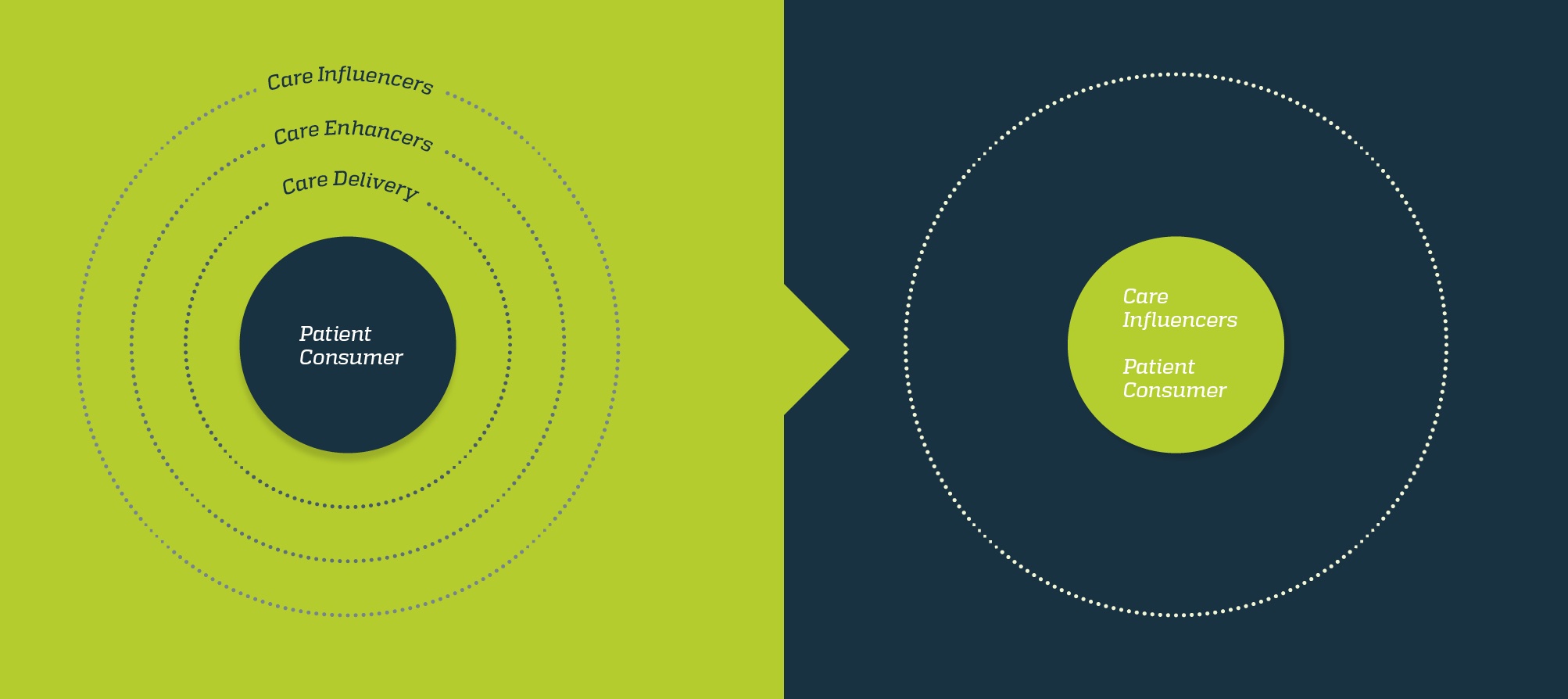 As we enter this age of “Social Health”, brands need to recognize the need to deliver value across the full spectrum to drive leads, convert prospects to customers and keep them loyal.
As we enter this age of “Social Health”, brands need to recognize the need to deliver value across the full spectrum to drive leads, convert prospects to customers and keep them loyal.
Get your creative juices flowing with these great blog topic tips
By
Orit Oz
, 06/06/2017
Here are some tips to get your creative juices flowing to come up with some great blog topics.
min read
In one of our last blogs, we spoke about how content is the fuel behind inbound marketing.
The question now is where do you start and what do you focus on?
Let’s start with a quick recap of the recommended process for creating content for inbound:
- Consider the content’s purpose, format and topics.
- Create content that builds trust amongst your prospects.
- Get your content in front of the right people at the right time.
- Analyze & repeat. Determine what worked and what didn’t, and repeat your successes.
What is lead nurturing?
By
Orit Oz
, 24/05/2017
Lead nurturing is the process of engaging with contacts via automated workflows to build a relationship with them.
min read
Lead nurturing is the process of engaging with contacts via automated workflows to build a relationship with them. The end goal is to close more educated and qualified customers faster and to delight customers to become promoters of your brand. Because the reality is that not all leads are ready to talk to the sales team at the beginning of their interaction with your company. In fact, most aren't, and according to HubSpot, research shows that only 5-25% of visitors that come to your site are ready to close the deal.
This means that in order for inbound marketing to be effective, you need to engage with your leads along every stage of the buyer's journey until they are ready to do business with you.
Which is where lead nurturing comes in. As a key component of your B2B marketing strategy, lead nurturing utilizes automated email campaigns that are timely, offer valuable content, and address your prospects' specific interests to nurture them until they're sales ready.
And, because the emails are automated, it saves you a lot of work by qualifying leads and pushing them through the sales funnel quicker, meaning a higher return on investment. In fact, DemandGen Report found that nurtured leads increase sales opportunities by an average of 20% versus non-nurtured leads.
As you begin to develop your lead nurturing workflows, always remember these foundational principles:
Because the reality is that not all leads are ready to talk to the sales team at the beginning of their interaction with your company. In fact, most aren't, and according to HubSpot, research shows that only 5-25% of visitors that come to your site are ready to close the deal.
This means that in order for inbound marketing to be effective, you need to engage with your leads along every stage of the buyer's journey until they are ready to do business with you.
Which is where lead nurturing comes in. As a key component of your B2B marketing strategy, lead nurturing utilizes automated email campaigns that are timely, offer valuable content, and address your prospects' specific interests to nurture them until they're sales ready.
And, because the emails are automated, it saves you a lot of work by qualifying leads and pushing them through the sales funnel quicker, meaning a higher return on investment. In fact, DemandGen Report found that nurtured leads increase sales opportunities by an average of 20% versus non-nurtured leads.
As you begin to develop your lead nurturing workflows, always remember these foundational principles:
- Grow and nurture relationships
- Offer educational content
- Use hyper personalization
Inbound marketing in a nutshell
By
Orit Oz
, 16/05/2017
When I just started my career, an intelligent woman told me that only when I understand.
min read
Inbound marketing is a customer-centric approach that focuses on attracting customers to your business by offering valuable and informative content that speaks to theirs needs and builds trust in your business.
As opposed to more traditional, marketer-centric marketing, which uses interruptive methods such as emails, cold calling, and printed ads to get the attention of prospects, inbound marketing creates positive interactions that empower prospects with the information they need to make decisions for themselves.

Why inbound marketing?
We live in an age where people are bombarded with advertising wherever they turn, and for this reason, have become increasingly skeptical of standard interruptive marketing methods. In fact, Harvard Business Review reports that 90% of B2B buyers never respond to cold-marketing. For this reason, instead of competing for consumer attention, inbound uses the fact that prospects seek out the information they need on their own terms. By developing valuable and relevant content with the expectation to be found, potential customers will come to you, become new clients, and ultimately be delighted by their experience.How does inbound marketing work?
Inbound marketing is based on four phases: attract, convert, close, delight
ATTRACT
First, attract visitors to your website using tools such as blogging, website optimization, and, social media. Tools: blog, social media, keywords, pagesCONVERT
Once you have new visitors, you can convert some into leads by gathering their contact information, the currency of inbound marketing. To do this, it's important to offer them something valuable, usually in the form of additional information or useful content. Tools: calls-to-action, landing pages, forms, contactsCLOSE
Once you’ve converted some visitors into leads, you need to nurture their interest by providing them with relevant information. In this stage, tools like email and CRM are helpful in selling to the right leads at the right time. Tools: email, workflows, lead scoring, CRM integrationsDELIGHT
Once you close a sale with a customer, your relationship is just beginning. At this stage, you need to continue to delight and engage them so they become happy promoters of your brand. Tools: social media, smart calls-to-action, email, workflows Analysis is critical to making inbound marketing work. Every strategy and technique you use, and content you create, should be analyzed regularly to see if it's working, and adjusted as needed to make it better.Does inbound marketing work for B2B?
By
Orit Oz
, 16/05/2017
Does inbound marketing work for B2B businesses? Of course it does, because it doesn’t matter what you’re selling or to whom – your customer always comes first.
min read
Attracting customers with inbound marketing
Inbound marketing is a customer-centric approach that focuses on attracting customers to your business. Unlike traditional interruptive marketing that vies for attention through cold calls, purchased ads, and email blasts, inbound marketing responds to prospects’ needs and interests by offering them valuable content in the right place and at the right time. “By publishing the right content in the right place at the right time, your marketing becomes relevant and helpful to your customers, not interruptive.” - Hubspot Read more about inbound marketing here.So how does inbound marketing work for B2B?
It’s often assumed that inbound marketing is better suited for businesses that sell directly to consumers (B2C); and, in the recent “push” to “pull” marketing shift, it appears that B2C organizations have more easily adopted this new marketing model. In contrast, B2B or B2C organizations appear to be more skeptical and adopt the new approach with more caution. The main reason for this is that a lot of B2B and B2B2C organizations are still trying to figure out how inbound marketing can work for them; and they often question whether this new approach is even applicable to business customers.The answer is — of course — YES!
Because the truth is that it doesn’t matter what you’re selling or to whom, the majority of your prospects are usually partially through the buying cycle before they even consider talking to a salesperson. And that’s where the emphasis needs to be — ON YOUR PROSPECTS. In order for inbound marketing to work, you need to have an in-depth understanding of your value chain and your sales model. Once you have that, you can then create valuable content that attracts visitors to your business, converts them into prospects, engages them until they decide to purchase your product or service, and then delights them so they become promoters of your brand. In this manner, you can use inbound marketing to create a win-win situation where you get closer to both your distributors and your end users, and in the process, increase brand awareness to enhance end-user demand for your brand (even if you they are not buying directly from you). But here’s the thing – you need to be in it for the long haul. Inbound marketing takes time, effort, and patience. But it’s definitely worth the wait!Attracting the RIGHT customers to your B2B business
By
Orit Oz
, 16/05/2017
Inbound marketing for B2B is about attracting the right people to your business – those who become leads, then customers and ultimately promoters of your brand.
min read
Inbound marketing is not just about attracting people to your business; it's about attracting the right people to your business – those who will become leads, and then customers, and ultimately happy promoters of your brand.
 There are tools for every stage of the inbound marketing process, and the first phase — attract — is all about getting suitable prospects in the door. This is usually done by offering valuable content and using a variety of marketing techniques to ensure that B2B buyers find your business, including blogging, SEO, and social media — but for the moment, let’s leave that for another post.
Because before you start anything, in order to attract the right customers, you obviously need to know who your ideal customers actually are — right?
Understanding who your customers are and what they want
For the inbound customer-centric approach to work, you need to know who you're actually trying to reach. The best way to learn about your ideal customers, their interests, and their buying habits is to develop buyer personas, which are simply representations of your ideal customers. Buyer personas are based on three essential practices – research, identifying trends, and creating persona profile stories. This research and analysis allows you to uncover the mindset, goals, challenges, and motivations of your potential buyers.
Once you've determined who your ideal customers are, the next step is understanding the buyer’s journey — which is the active research process your potential prospects go through before making a purchase. This journey, which is usually divided into three stages – awareness, consideration, and decision--, helps you tailor your inbound marketing and content to create meaningful interactions with your ideal customers (buyer personas) at every stage of their process (buyer's journey).
There are tools for every stage of the inbound marketing process, and the first phase — attract — is all about getting suitable prospects in the door. This is usually done by offering valuable content and using a variety of marketing techniques to ensure that B2B buyers find your business, including blogging, SEO, and social media — but for the moment, let’s leave that for another post.
Because before you start anything, in order to attract the right customers, you obviously need to know who your ideal customers actually are — right?
Understanding who your customers are and what they want
For the inbound customer-centric approach to work, you need to know who you're actually trying to reach. The best way to learn about your ideal customers, their interests, and their buying habits is to develop buyer personas, which are simply representations of your ideal customers. Buyer personas are based on three essential practices – research, identifying trends, and creating persona profile stories. This research and analysis allows you to uncover the mindset, goals, challenges, and motivations of your potential buyers.
Once you've determined who your ideal customers are, the next step is understanding the buyer’s journey — which is the active research process your potential prospects go through before making a purchase. This journey, which is usually divided into three stages – awareness, consideration, and decision--, helps you tailor your inbound marketing and content to create meaningful interactions with your ideal customers (buyer personas) at every stage of their process (buyer's journey).
The power of content in inbound marketing
By
Orit Oz
, 16/05/2017
Content is the fuel behind inbound marketing – it carries the message your company wants to deliver to your customers at the right time and in the right place.
min read
Content is what sets you apart
It’s the fuel behind inbound marketing – it carries the message your company wants to deliver to your customers at the right time and in the right place. It’s what powers a successful inbound strategy by pulling people from one stage of the inbound methodology to another and addressing their challenges and questions.Content in B2B
Content marketing works for every type of business. In fact, according to a report put out by the Content Marketing Institute, 85% of B2B marketers identified the creation of quality and efficient content as being a leading factor for increased marketing success in 2016. Additionally, based on company metrics, 78% of these B2B marketers report an increase in audience engagement and 57% saw an increase in sales with use of content for their B2B marketing.The content process
Now that we've established the importance of content, where do you start and what should you focus on? The best way to optimize your content for your inbound marketing strategy is to follow a content process that involves 4 main steps:- Consider the content’s purpose, format and topics.
- Create content that builds trust amongst your prospects.
- Get your content in front of the right people at the right time.
- Analyze & repeat. Determine what worked and what didn’t, and repeat your successes.
How can the digital revolution help you extend your reach?
By
Orit Oz
, 15/05/2017
As technology rocks our world, we need to get closer to our customers, understand their customer journey, and adjust our marketing and sales accordingly.
min read
If we were to tell you that the world is in the midst of another major digital revolution, would you be surprised? We wouldn’t — because technology is seriously rocking our world, and it’s creating unprecedented disruption in its wake.
It’s completely changing our methods of doing business and transforming the business models of each and every industry. Soon, almost anyone will be able to invent new products cheaply and quickly. And to make things even more challenging, the new competition is selling directly to the end user.
So where does that leave us? We can bury our heads in the sand and rely on existing methods that have worked until now, and hope for the best. Or, we can accept the fact that we need to adjust, challenge the status quo, and take advantage of these changes to not only survive but actually boost our businesses.
But where do we start? First, it’s important to understand that the single and most important factor in this new era is the customer who actually uses your product or service. Not your product/service, or your technology, or your market — your customer! At the end of the day, your success is determined by how well you know your customers and how well you meet their needs or solve their challenges.
This means that before you do anything else, you need to identify, understand and talk to your customers.
This involves meeting customers at different points on their journey, mapping their journey and fully understanding their needs. Once you’ve done this, you can go on to define your potential buyer personas; identify how you meet their needs, motivations, pain points and challenges; create relevant offline and online content and tools to communicate with them; reallocate marketing and sales (and other) resources to match the real needs of your customers; and create collaboration between your marketing and sales (and other) teams. But first, get to know your customers! From there, the rest will follow.What’s all the fuss about Inbound marketing?
By
Orit Oz
, 15/05/2017
We’ve all heard the term Inbound marketing thrown around a lot lately. It’s become the latest catchphrase in a field that’s already packed with catchphrases.
min read
We’ve all heard the term Inbound marketing thrown around a lot lately. It’s become the latest catchphrase in a field that’s already packed with catchphrases.
But what does it actually mean and can it help B2B businesses grow?

What is Inbound marketing?
Inbound marketing is the process of attracting potential customers and getting them to reach out to you. This is different to more traditional marketing (also known as push marketing or outbound marketing) where you actively reach out to potential customers through methods such as cold-calling, printed magazines, and traditional advertising. But how do you attract potential customers and get them to trust you before you’ve even pitched them your product? The answer lies in content —the foundation of the Inbound methodology. By creating carefully curated content, you’ll establish yourself as a trusted source of knowledge and attract the ideal visitors to your site, convert them into leads and then customers, and keep them engaged so they go on to promote your brand. “By publishing the right content in the right place at the right time, your marketing becomes relevant and helpful to your customers, not interruptive.” - Hubspot
Inbound marketing in a nutshell
Inbound marketing is filled with complexities, but the following four steps (based on the Hubspot Inbound methodology) summarize the main Inbound stages:- Attract. Before you do anything, you need to fully research and understand who your ideal customers or buyer personas are. Once you have identified them, you can get them to come to you.
- Find creative ways to “convert” these potential customers into leads by offering them something valuable in return.
- Turn your leads into customers.
- Continue to engage with your customers so they become promoters of your brand.
Inbound marketing in B2B
At this stage, you may be wondering whether Inbound marketing works in the world of B2B. The answer is a big loud “Yes!” In fact, Inbound marketing creates a win-win situation for you where you can get closer to your direct customers and distributors, and also increase brand awareness amongst end users to enhance end-user demand for your brand (even if you they are not buying directly from you). Read how Elcam used digital marketing to increase brand awareness>>Combining Inbound and offline marketing
We’d like to emphasize that Inbound marketing does not replace the need for interpersonal interaction with your customers – especially in B2B industries where the customer model tends to be more complex and is often based on long-term relationships. The goal is to find the right communication mix for your specific B2B business needs, market and customers. By promoting your brand through a digital dialog and an inter-personal dialog, you can achieve a more effective and efficient sales and marketing process for better business results. For example, you can combine a compelling digital campaign to encourage potential customers to visit you at a trade show, and then meet them at the event to continue a direct dialogue with them. Look out for our next blog post on the need for face-to-face communication with your customers and creative ways to combine digital and interpersonal communication (coming soon).Inbound marketing – here to stay?
Another big loud “Yes!” It’s quite simple - as more and more potential buyers turn to the Internet for answers to their challenges, they look to buy from suppliers who instill trust by answering their questions and offering solutions to their problems. This means that in order to stay relevant in the marketplace, you have to be present where your potential buyers are looking for answers - online. And that’s why everyone is fussing over Inbound marketing.The importance of branding in launching new products
By
Orit Oz
, 15/05/2017
Prior to the recent release of Mazor X, Oz Branding worked with Mazor Robotics to create a compelling brand promise for the new product — Align with Experience.
min read
There is no greater satisfaction than watching our customers successfully launch groundbreaking and transformative products that take the market by storm — especially when we played a role in branding them!
Which is why we’re so psyched by the extensive media coverage and enthusiasm surrounding the recent release of Mazor X —a transformative guidance platform for spine surgeries developed by Mazor Robotics.
According to Ori Hadomi, Chief Executive Officer of Mazor Robotics in a quote for Yahoo Finance: "The Mazor X system is the culmination of a multi-year development effort by our team of robotic, algorithm and imaging experts, incorporating market feedback gathered from thousands of clinical cases performed with the Mazor core technology. It exemplifies our vision of healing through innovation and our ongoing dedication to patients by expanding guidance capabilities in the spine operating room. We believe it can change the way spine surgeries are performed.”
During the development of Mazor X, Oz Branding and Adlai & Partners worked with Mazor Robotics to identify key values for multiple customer segments, created a compelling brand promise for the new product — Align With Experience.
Global marketing challenges for B2B companies
By
Orit Oz
, 14/05/2017
Challenges in global marketing for B2B companies, the complexities involved in growing a global brand, and ideas on how we can overcome these challenges.
min read
The International B2B Marketing Conference 2015
We had a wonderful time learning about and discussing the challenges in global marketing for B2B companies at our International B2B marketing Conference earlier this month. We'd like to give a big thank you to our partners at the E3 International Agency Network for working with us. And, we'd especially like to thank the over 200 people who attended, including executives who came from over 10 countries around the world! At our conference we had the pleasure to hear from several marketing and branding experts in different regions around the globe. Each of them spoke about the complexities involved in growing a global brand, the challenges all of us face, and ideas on how we can overcome these challenges.
The next few posts will cover each presentation in more detail, but in the meantime, we'll give you a short summary of the topics covered by each speaker:
Dirk Assent, Managing Partner at Bernstein Gmbh, Bremen, spoke about how to tackle the internal and external challenges of a divided market (or, as he puts it: Why marketing in Europe is like a polar bear.) Mike Golden, the CEO of Adsmith China, Shanghai, spoke about the marketing successes as well as the many branding failures in bringing products to China.
At our conference we had the pleasure to hear from several marketing and branding experts in different regions around the globe. Each of them spoke about the complexities involved in growing a global brand, the challenges all of us face, and ideas on how we can overcome these challenges.
The next few posts will cover each presentation in more detail, but in the meantime, we'll give you a short summary of the topics covered by each speaker:
Dirk Assent, Managing Partner at Bernstein Gmbh, Bremen, spoke about how to tackle the internal and external challenges of a divided market (or, as he puts it: Why marketing in Europe is like a polar bear.) Mike Golden, the CEO of Adsmith China, Shanghai, spoke about the marketing successes as well as the many branding failures in bringing products to China.
 Our very own Dina Gidron at Oz Branding also addressed the crowd about the trends in online and offline marketing, and Eyal Tryber, CEO of the Israeli Maytronics company, shared fascinating insights about building the Maytronics brand globally. We also heard from Matt Bowen, President and CEO of Aloft Group in Boston, who shared with us the success factors involved in growing your brand in the US.
We gained a lot in insight at this conference and enjoyed seeing old colleagues and meeting new ones. We hope you did too!
Our very own Dina Gidron at Oz Branding also addressed the crowd about the trends in online and offline marketing, and Eyal Tryber, CEO of the Israeli Maytronics company, shared fascinating insights about building the Maytronics brand globally. We also heard from Matt Bowen, President and CEO of Aloft Group in Boston, who shared with us the success factors involved in growing your brand in the US.
We gained a lot in insight at this conference and enjoyed seeing old colleagues and meeting new ones. We hope you did too!

How B2B Brands Drive Sales
By
Orit Oz
, 14/05/2017
One of the most difficult parts of B2B branding is selling the brand to sales. Many B2B brands fail because they haven't been integrated into the sales force
min read
If General Electric and IBM were sold tomorrow, their brand value alone would be approximately $45 and $75 million respectively. These brand valuations sit right next to well-known consumer brands such as McDonalds and Coca-Cola, illustrating that B2B brands, similar to their consumer brand cousins, also drive billions of dollars in value and market capitalization in intangible assets of "goodwill." Why would anyone want to spend an additional $31 million in purchase price for a brand alone? It's not just your average person who pays more for a brand. It's top-level executives too.
A 2012 McKinsey survey of more than 700 executives with substantial influence on supplier selection in the United States, Germany, and India found that consideration of the brand was a central decision when deciding whether or not to purchase.
The survey found that the brand was almost as important as the sales team in encouraging them to purchase.
Why would anyone want to spend an additional $31 million in purchase price for a brand alone? It's not just your average person who pays more for a brand. It's top-level executives too.
A 2012 McKinsey survey of more than 700 executives with substantial influence on supplier selection in the United States, Germany, and India found that consideration of the brand was a central decision when deciding whether or not to purchase.
The survey found that the brand was almost as important as the sales team in encouraging them to purchase.
 https://www.linkedin.com/pulse/global-b2b-brands-highest-brand-value-waldemar-pfoertsch
What can we learn from this? Well, for one, that B2B purchasers are human beings at the end of day. They are a lot less value-driven than they like to think, and heavily swayed by the brand, which helps them simplify evaluating the product.
https://www.linkedin.com/pulse/global-b2b-brands-highest-brand-value-waldemar-pfoertsch
What can we learn from this? Well, for one, that B2B purchasers are human beings at the end of day. They are a lot less value-driven than they like to think, and heavily swayed by the brand, which helps them simplify evaluating the product.
 Despite the enormous added-value of a strong brand in a purchasing price, one of the most difficult parts of B2B branding is selling the brand to sales. Many B2B brands fail because they haven't been properly integrated into – and accepted by – the sales force.
To ensure that your brand is accepted by your salespeople, you'll want to make sure you're providing the answers to these questions:
Despite the enormous added-value of a strong brand in a purchasing price, one of the most difficult parts of B2B branding is selling the brand to sales. Many B2B brands fail because they haven't been properly integrated into – and accepted by – the sales force.
To ensure that your brand is accepted by your salespeople, you'll want to make sure you're providing the answers to these questions:
 Consider a sales and marketing workshop, where salespeople explore the meaning behind the new brand and how it can help them be more successful. One practical exercise during the workshop might be to develop a pitch book – a sales tool that should communicate what the company does, why it does it, and why it is better than the competition. This time, however, you'll want to develop it through the perspective of a salesperson who understands the value, messages, and how to communicate the company's brand.
Consider a sales and marketing workshop, where salespeople explore the meaning behind the new brand and how it can help them be more successful. One practical exercise during the workshop might be to develop a pitch book – a sales tool that should communicate what the company does, why it does it, and why it is better than the competition. This time, however, you'll want to develop it through the perspective of a salesperson who understands the value, messages, and how to communicate the company's brand.

 https://www.linkedin.com/pulse/global-b2b-brands-highest-brand-value-waldemar-pfoertsch
What can we learn from this? Well, for one, that B2B purchasers are human beings at the end of day. They are a lot less value-driven than they like to think, and heavily swayed by the brand, which helps them simplify evaluating the product.
https://www.linkedin.com/pulse/global-b2b-brands-highest-brand-value-waldemar-pfoertsch
What can we learn from this? Well, for one, that B2B purchasers are human beings at the end of day. They are a lot less value-driven than they like to think, and heavily swayed by the brand, which helps them simplify evaluating the product.
Getting the Sales Team on Board
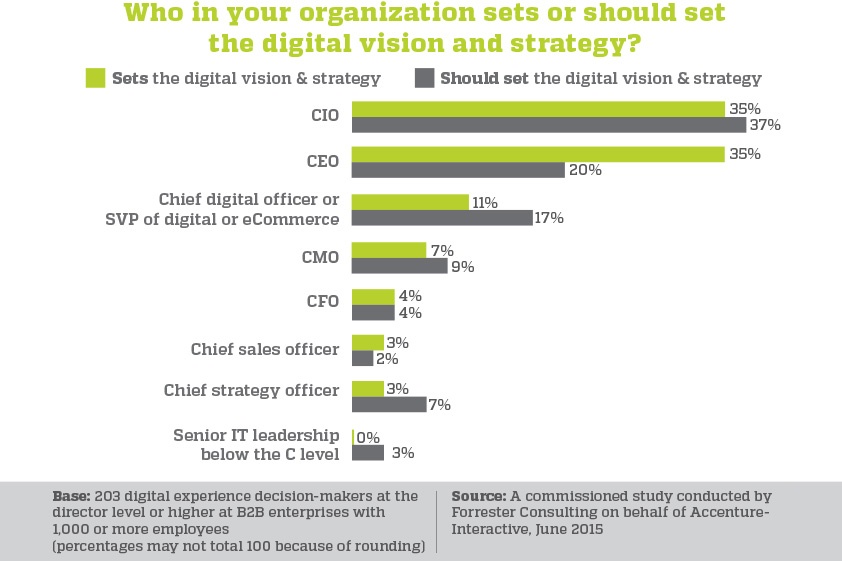 Despite the enormous added-value of a strong brand in a purchasing price, one of the most difficult parts of B2B branding is selling the brand to sales. Many B2B brands fail because they haven't been properly integrated into – and accepted by – the sales force.
To ensure that your brand is accepted by your salespeople, you'll want to make sure you're providing the answers to these questions:
Despite the enormous added-value of a strong brand in a purchasing price, one of the most difficult parts of B2B branding is selling the brand to sales. Many B2B brands fail because they haven't been properly integrated into – and accepted by – the sales force.
To ensure that your brand is accepted by your salespeople, you'll want to make sure you're providing the answers to these questions:
1. Are You Telling the Right Brand Story?
It can be helpful to first take a step back and reevaluate if your internal B2B brand story is the same of that of your customers. The same McKinsey study from above found that often the two audiences focused on completely different things --- B2B suppliers focused on sustainability, global reach, and corporate responsibility whereas customers focused on honesty, responsibility across the supply chain, and level of specialized expertise.2. Do Your Salespeople Understand What a Brand is?
Your salespeople need to understand that a brand is what happens before you enter a room and after you leave. It also provides a framework for communicating the values behind your company's product or service.3. Do Your Salespeople Understand How A Brand Can Help Them?
This is where "branding in" can be vital. "Branding in" connects the entire company to the brand promise and implements it in their day-to-day responsibilities. For starters, you'll need to make sure marketing and sales are communicating in the same language. Consider a sales and marketing workshop, where salespeople explore the meaning behind the new brand and how it can help them be more successful. One practical exercise during the workshop might be to develop a pitch book – a sales tool that should communicate what the company does, why it does it, and why it is better than the competition. This time, however, you'll want to develop it through the perspective of a salesperson who understands the value, messages, and how to communicate the company's brand.
Consider a sales and marketing workshop, where salespeople explore the meaning behind the new brand and how it can help them be more successful. One practical exercise during the workshop might be to develop a pitch book – a sales tool that should communicate what the company does, why it does it, and why it is better than the competition. This time, however, you'll want to develop it through the perspective of a salesperson who understands the value, messages, and how to communicate the company's brand.
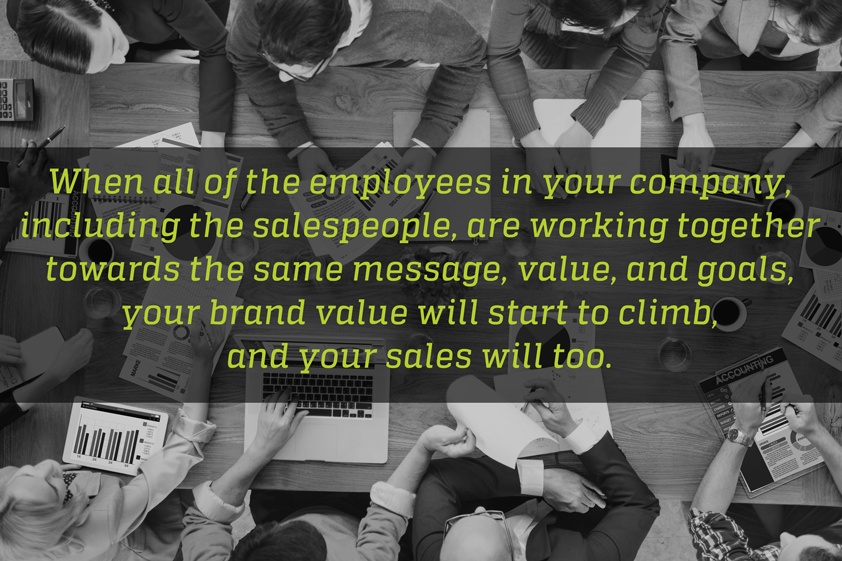
Witness Your Brand Increase Revenue
Align your sales and marketing together in building your brand by answering these questions as a company. Bring in experts to help you if possible (we know of a good one offhand) When all of the employees in your company, including the salespeople, are working together towards the same message, value, and goals, your brand value will start to climb, and your sales will too.Growing Your Brand in the USA: Key Success Factors
By
Orit Oz
, 14/05/2017
Matt Bowen, shared with us at the Global Marketing Challenges for B2B Companies the key success factors for Israeli companies to scale their product in the U.S.
min read
Note: This is Part 4 of a 5-part series on our annual international B2B marketing conference this past November. Read Part 3 here.
Matt Bowen, President and CEO of Aloft Group, shared with us at the Global Marketing Challenges for B2B Companies the key success factors for Israeli companies to scale their product in the U.S. Mr. Bowen cited this article from Harvard business review which noted that in a survey of 112 Israeli companies founded between 1996 and 2013 that met or exceeded $20 million in revenue, most shared two common characteristics. The vast majority – 91% -- had both Israeli CEOs and had received funding from foreign VCs.
Mr. Bowen cited this article from Harvard business review which noted that in a survey of 112 Israeli companies founded between 1996 and 2013 that met or exceeded $20 million in revenue, most shared two common characteristics. The vast majority – 91% -- had both Israeli CEOs and had received funding from foreign VCs.
 Mr. Bowen believes that in addition to these factors, Israeli companies that desire to successfully penetrate the US market must be truly remarkable. We'll examine three key factors that contribute to a company's "remarkability" in this post.
Mr. Bowen believes that in addition to these factors, Israeli companies that desire to successfully penetrate the US market must be truly remarkable. We'll examine three key factors that contribute to a company's "remarkability" in this post.

 While the US market offers a lot of exciting opportunity for growth for any Israeli company, it is also quite diverse. The market forces can create a lot of voices, as well as choices, and your company's brand needs to be able to be heard above the noise. Mr. Bowen showed us how his company was able to zoom and focus on the market for one client, Greiner Packing, by creating customer personas. By focusing on specific personas and understanding what these personas do on a typical day, their pain points, values and possible objections to the product, his company gained a much clearer focus of who would benefit from the product and how. Here's a detailed example of a customer persona:
While the US market offers a lot of exciting opportunity for growth for any Israeli company, it is also quite diverse. The market forces can create a lot of voices, as well as choices, and your company's brand needs to be able to be heard above the noise. Mr. Bowen showed us how his company was able to zoom and focus on the market for one client, Greiner Packing, by creating customer personas. By focusing on specific personas and understanding what these personas do on a typical day, their pain points, values and possible objections to the product, his company gained a much clearer focus of who would benefit from the product and how. Here's a detailed example of a customer persona:
 From this type in-depth understanding of your customers, you can start to build your company's story more clearly.
From this type in-depth understanding of your customers, you can start to build your company's story more clearly.

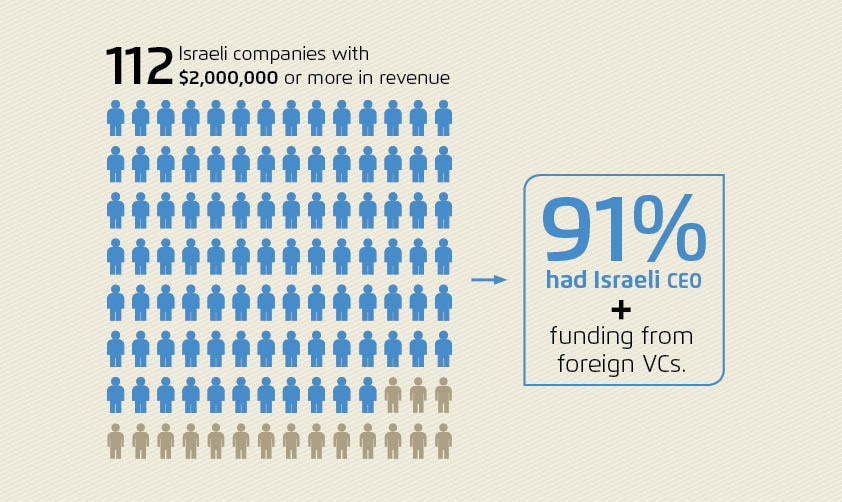 Mr. Bowen believes that in addition to these factors, Israeli companies that desire to successfully penetrate the US market must be truly remarkable. We'll examine three key factors that contribute to a company's "remarkability" in this post.
Mr. Bowen believes that in addition to these factors, Israeli companies that desire to successfully penetrate the US market must be truly remarkable. We'll examine three key factors that contribute to a company's "remarkability" in this post.

Step 1 – Zoom and Focus
 While the US market offers a lot of exciting opportunity for growth for any Israeli company, it is also quite diverse. The market forces can create a lot of voices, as well as choices, and your company's brand needs to be able to be heard above the noise. Mr. Bowen showed us how his company was able to zoom and focus on the market for one client, Greiner Packing, by creating customer personas. By focusing on specific personas and understanding what these personas do on a typical day, their pain points, values and possible objections to the product, his company gained a much clearer focus of who would benefit from the product and how. Here's a detailed example of a customer persona:
While the US market offers a lot of exciting opportunity for growth for any Israeli company, it is also quite diverse. The market forces can create a lot of voices, as well as choices, and your company's brand needs to be able to be heard above the noise. Mr. Bowen showed us how his company was able to zoom and focus on the market for one client, Greiner Packing, by creating customer personas. By focusing on specific personas and understanding what these personas do on a typical day, their pain points, values and possible objections to the product, his company gained a much clearer focus of who would benefit from the product and how. Here's a detailed example of a customer persona:
 From this type in-depth understanding of your customers, you can start to build your company's story more clearly.
From this type in-depth understanding of your customers, you can start to build your company's story more clearly.
Step 2 - Tell a Bigger Story
From his vast experience in the field, Mr. Bowen told us: "Companies that seek to enter the US market successfully need a bigger story." That also means not overly focusing on your products or technology, but how it can make your customer's lives better. It's the customer's emotional connection to the brand that ultimately builds your customer relationships and brand loyalty.Step 3 - Cultivate Relationships to Inspire Brand Loyalty
Brand loyalty is a goal that is achieved by a journey - a journey with each customer. Through focusing and zooming in on your market and telling the right story, you'll start to build relationships. Customers with good experiences will be happy to share it with the world, especially if they believe in your product. Many of these relationships will develop into brand advocates and slowly build your brand and customer loyalty.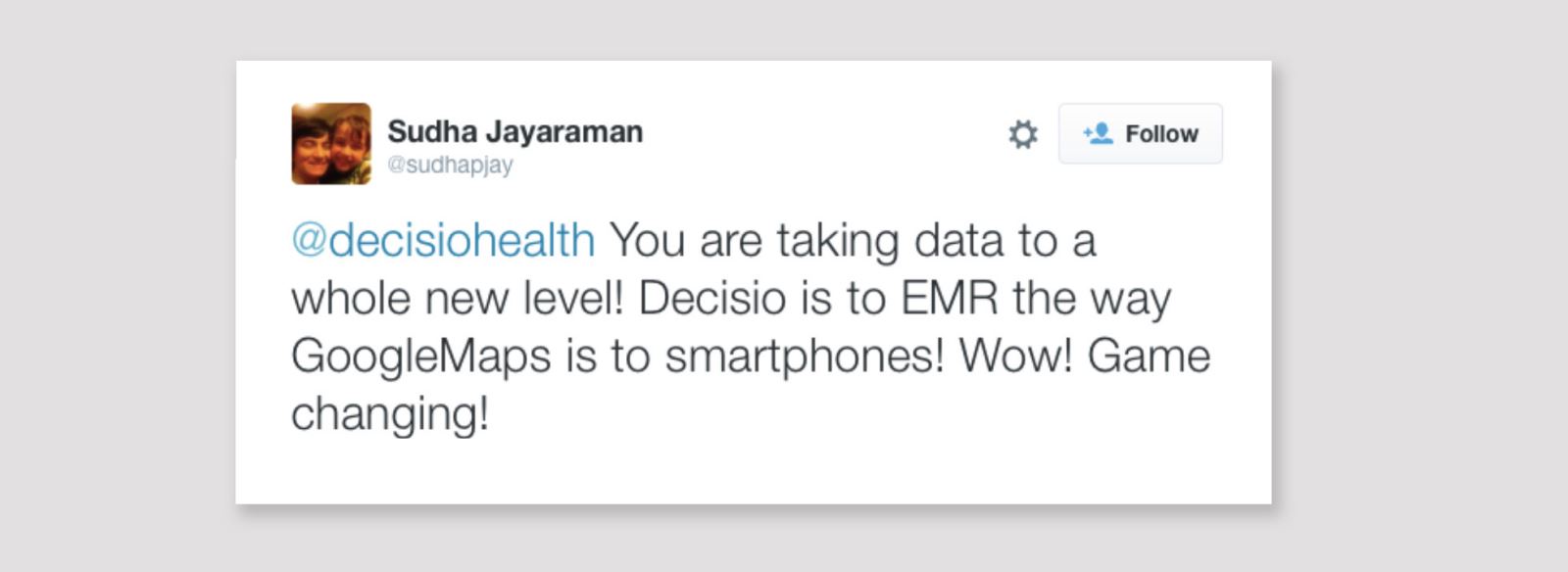
To Make it In America, Be Remarkable
As we've explained, there are three key factors to successfully entering the US market. First, your company must focus and zoom in on its market. Creating in-depth customer personas can help with this. Secondly, you'll need to come up with a way to tell a "bigger story" – one that doesn't focus too much on your products and technology, but how it will add value to your customer's life. Finally, you'll need to build relationships with customers based on exceptional customer experiences in order to create brand advocates and loyalty. These three factors can go a long way in making your company truly remarkable and successfully scale in the US.From Israel to Global: Lessons Learned in Building a Global Brand
By
Orit Oz
, 14/05/2017
Mr. Eyal Tryber,CEO of Maytronics and former CMO, talks about the lessons learned from his own first-hand experience, from building a global brand
min read
Note: This is Part 3 of a 5-part series highlighting the speakers from our annual international B2B marketing conference this past November. Read Part 2 here.
At the Global Marketing Challenges for B2B Companies conference we had the distinct pleasure to hear from Mr. Eyal Tryber, CEO of Maytronics, about the lessons he and his company learned from building a global brand. As the former VP of Sales and Marketing at Maytronics for over seven years before his appointment as the CEO in May of this year, these lessons are from his own first-hand experience.
 Let's start off with a bit of background about the company. A company with humble beginnings – it was founded on Kibbutz Yizreel in Northern Israel in 1983 – Maytronics has come a long way in the automated pool cleaning market. With over a billion shekels in market value, over 400 employees and operations in 46 countries and more than one million pool-cleaning robots sold, Maytronics is now a prosperous global company. The company is publicly traded both on the NASDAQ and the Tel Aviv Stock Exchange.
After going public in 2004, the company embarked on a new marketing strategy: creating anchors in strategic markets. Company branches were established in Argentina, the US, France, Australia and Spain. Their strategy paid off as the company began to achieve unprecedented growth. As it grew, however, new challenges arose. First, each company branch started to create its own multi-culture, which created tension between local and global brands. Secondly, as the company grew, it risked losing its unique Maytronics company culture – stemming from its humble Israeli kibbutz origin and culture.
Let's start off with a bit of background about the company. A company with humble beginnings – it was founded on Kibbutz Yizreel in Northern Israel in 1983 – Maytronics has come a long way in the automated pool cleaning market. With over a billion shekels in market value, over 400 employees and operations in 46 countries and more than one million pool-cleaning robots sold, Maytronics is now a prosperous global company. The company is publicly traded both on the NASDAQ and the Tel Aviv Stock Exchange.
After going public in 2004, the company embarked on a new marketing strategy: creating anchors in strategic markets. Company branches were established in Argentina, the US, France, Australia and Spain. Their strategy paid off as the company began to achieve unprecedented growth. As it grew, however, new challenges arose. First, each company branch started to create its own multi-culture, which created tension between local and global brands. Secondly, as the company grew, it risked losing its unique Maytronics company culture – stemming from its humble Israeli kibbutz origin and culture.
 What are Maytronics' core values? Most importantly, the company believes in focusing on the customer. Along with this are professional values of integrity and fairness. Together these are the internal values, or company culture, of Maytronics.
What are Maytronics' core values? Most importantly, the company believes in focusing on the customer. Along with this are professional values of integrity and fairness. Together these are the internal values, or company culture, of Maytronics.
 Other values, while important, are components assisting in delivering these primary values. Although Maytronics develops pool cleaning robots, this alone doesn't fully encapsulate the company's purpose. As Mr. Tryber stated in his talk at the conference: "We don't sell robots, we sell an exceptional customer experience."
Other values, while important, are components assisting in delivering these primary values. Although Maytronics develops pool cleaning robots, this alone doesn't fully encapsulate the company's purpose. As Mr. Tryber stated in his talk at the conference: "We don't sell robots, we sell an exceptional customer experience."
 Oz successfully transformed the company's internal values, or company culture, flipping them to discover the other side of the coin: the company's brand.
Oz successfully transformed the company's internal values, or company culture, flipping them to discover the other side of the coin: the company's brand.
 Let's start off with a bit of background about the company. A company with humble beginnings – it was founded on Kibbutz Yizreel in Northern Israel in 1983 – Maytronics has come a long way in the automated pool cleaning market. With over a billion shekels in market value, over 400 employees and operations in 46 countries and more than one million pool-cleaning robots sold, Maytronics is now a prosperous global company. The company is publicly traded both on the NASDAQ and the Tel Aviv Stock Exchange.
After going public in 2004, the company embarked on a new marketing strategy: creating anchors in strategic markets. Company branches were established in Argentina, the US, France, Australia and Spain. Their strategy paid off as the company began to achieve unprecedented growth. As it grew, however, new challenges arose. First, each company branch started to create its own multi-culture, which created tension between local and global brands. Secondly, as the company grew, it risked losing its unique Maytronics company culture – stemming from its humble Israeli kibbutz origin and culture.
Let's start off with a bit of background about the company. A company with humble beginnings – it was founded on Kibbutz Yizreel in Northern Israel in 1983 – Maytronics has come a long way in the automated pool cleaning market. With over a billion shekels in market value, over 400 employees and operations in 46 countries and more than one million pool-cleaning robots sold, Maytronics is now a prosperous global company. The company is publicly traded both on the NASDAQ and the Tel Aviv Stock Exchange.
After going public in 2004, the company embarked on a new marketing strategy: creating anchors in strategic markets. Company branches were established in Argentina, the US, France, Australia and Spain. Their strategy paid off as the company began to achieve unprecedented growth. As it grew, however, new challenges arose. First, each company branch started to create its own multi-culture, which created tension between local and global brands. Secondly, as the company grew, it risked losing its unique Maytronics company culture – stemming from its humble Israeli kibbutz origin and culture.
Bridging Gaps in Cultural Differences While Sustaining Continuous Growth
And thus, Maytronics embarked on an international organization process with Oz. Oz carried out this process in two ways. First, it enhanced the company dialog in order to form one distinct Maytronics company culture. This in turn helped build a strong global brand with a highly committed team located all over the world. Or as Tony Hsieh, CEO of Zappos put it: "We believe that your company's culture and your company's brand are really just two sides of the same coin." In order to form this distinct company brand and culture, Oz and Maytronics brainstormed together a list of its core values, applying the "Golden Circle" concept of Simon Sinek. According to this concept, products (the what) and the development (the how) serve to achieve a company purpose (the why). This also assists in creating an understanding of the company's competitive edge in the marketplace.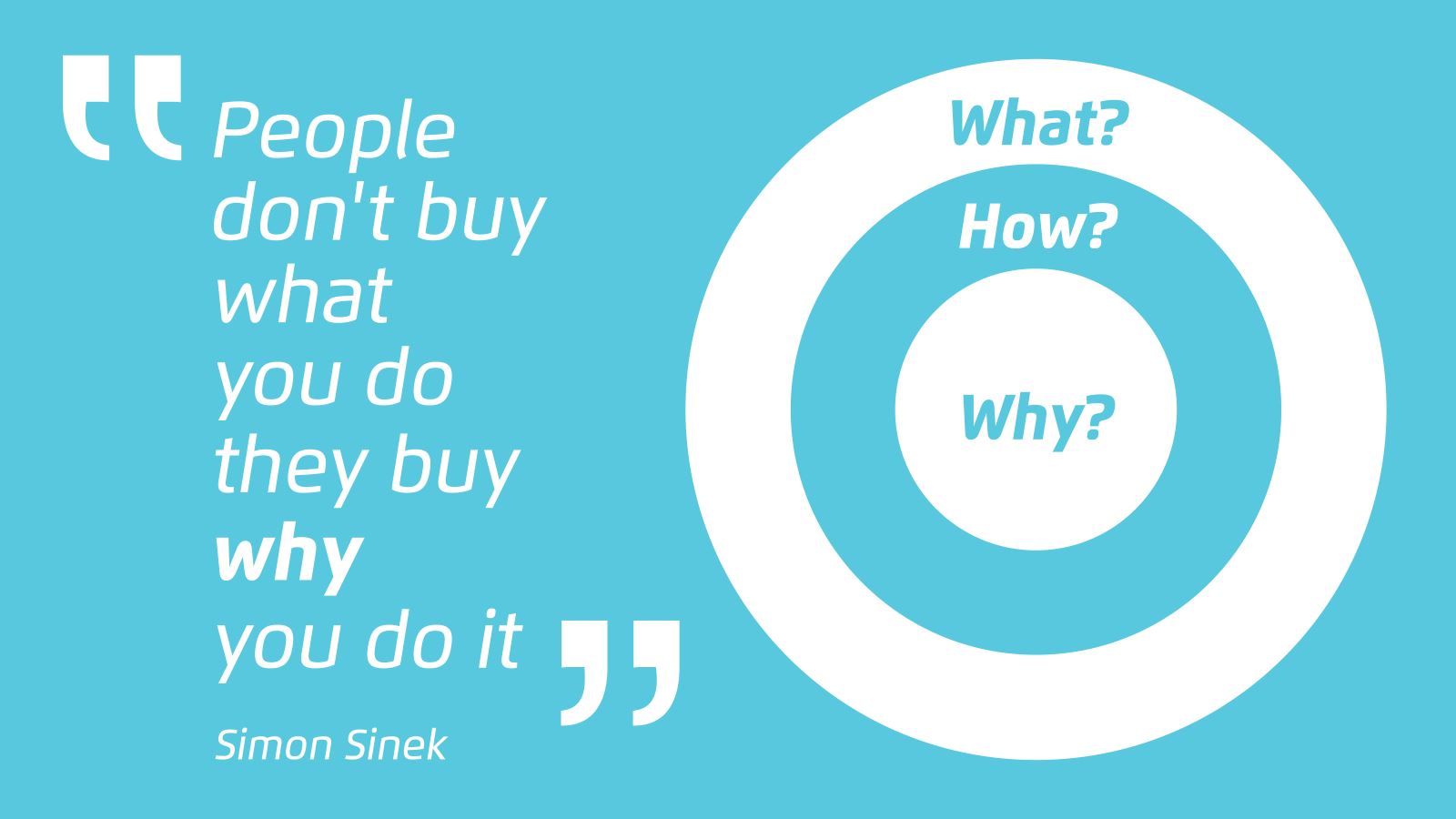 What are Maytronics' core values? Most importantly, the company believes in focusing on the customer. Along with this are professional values of integrity and fairness. Together these are the internal values, or company culture, of Maytronics.
What are Maytronics' core values? Most importantly, the company believes in focusing on the customer. Along with this are professional values of integrity and fairness. Together these are the internal values, or company culture, of Maytronics.
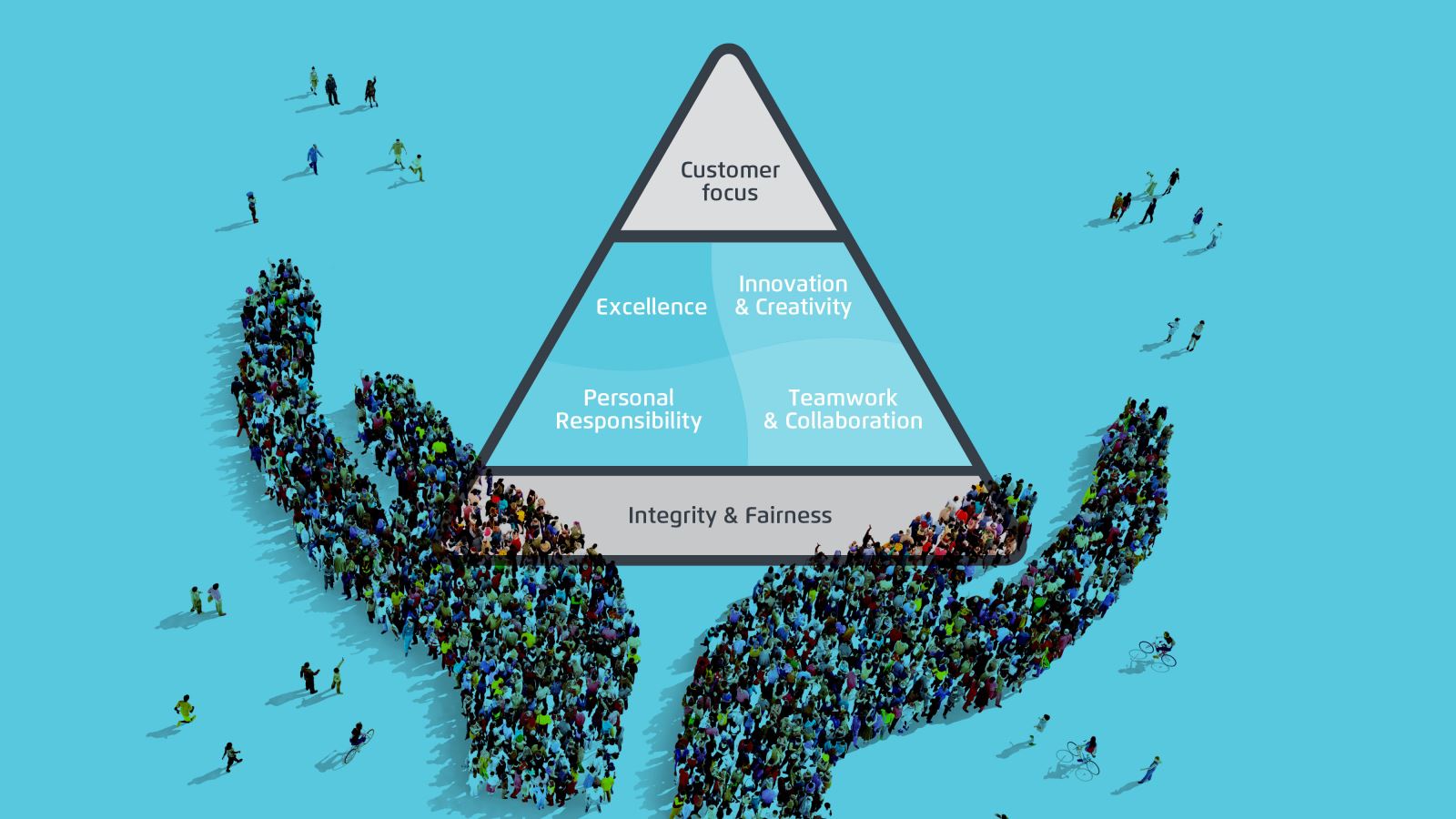 Other values, while important, are components assisting in delivering these primary values. Although Maytronics develops pool cleaning robots, this alone doesn't fully encapsulate the company's purpose. As Mr. Tryber stated in his talk at the conference: "We don't sell robots, we sell an exceptional customer experience."
Other values, while important, are components assisting in delivering these primary values. Although Maytronics develops pool cleaning robots, this alone doesn't fully encapsulate the company's purpose. As Mr. Tryber stated in his talk at the conference: "We don't sell robots, we sell an exceptional customer experience."
 Oz successfully transformed the company's internal values, or company culture, flipping them to discover the other side of the coin: the company's brand.
Oz successfully transformed the company's internal values, or company culture, flipping them to discover the other side of the coin: the company's brand.
Drastic Results Which are Just the Beginning
The branding process with Maytronics was successful in that it quickly unified the global team, facilitating increased teamwork and collaboration. In addition, its company collateral and imaging are consistent both globally and locally. Although these results were the most immediate, the new branding left an impact which will be felt in the company, both internally and externally, for the long-term future as well.Getting Over the Great Wall: Marketing Successes and Failures in China
By
Orit Oz
, 14/05/2017
Mike Golden, CEO of Adsmith, gave us some tips at the B2B International Conference about what to do (and what not to do) when marketing your brand in China.
min read
Note: This is Part 2 of a 5-part series highlighting the speakers from our annual international B2B marketing conference this past November. Read Part 1 here.
Mike Golden, CEO of Adsmith China, gave us some tips at the B2B International Conference 2015 this November about what to do (and what not to do) when marketing your brand in China. This country of 1.3 billion people and an estimated 6.5% growth for the next five years (and that's slow!) offers an exciting opportunity for global brands.

 He told a cautionary tale of a luxury brand company that decided they didn't need a name in China. As a result, newspapers came up with their own competing versions of the same brand. At one point, people started to trademark those names. That's another reason why it's so important to create a Chinese version of your company name. If you don't do it, someone else will.
He told a cautionary tale of a luxury brand company that decided they didn't need a name in China. As a result, newspapers came up with their own competing versions of the same brand. At one point, people started to trademark those names. That's another reason why it's so important to create a Chinese version of your company name. If you don't do it, someone else will.
 Fortunately, his company is successful at transforming Chinese versions of websites into clean, white homepages. One example he showed us was Lycored, a company specializing in food ingredients. They were able to localize the Chinese version of their website with images while at the same time create a nice, clean homepage:
Fortunately, his company is successful at transforming Chinese versions of websites into clean, white homepages. One example he showed us was Lycored, a company specializing in food ingredients. They were able to localize the Chinese version of their website with images while at the same time create a nice, clean homepage:
 "No one was talking about the threat of resistance. It was an invisible threat – but once it appeared, it was already too late. We gave this threat a face and a name, so people could start talking about it," Mr. Asset explained. "There's an old saying, `If you want to own the solution, you have own the problem.' So we were the ones to start talking about it."
They were also able to use a lot of red. Red is a very lucky color in China, Mr. Golden explained, so it was great that Lycored uses red.
"No one was talking about the threat of resistance. It was an invisible threat – but once it appeared, it was already too late. We gave this threat a face and a name, so people could start talking about it," Mr. Asset explained. "There's an old saying, `If you want to own the solution, you have own the problem.' So we were the ones to start talking about it."
They were also able to use a lot of red. Red is a very lucky color in China, Mr. Golden explained, so it was great that Lycored uses red.
Fail Small, Fail Large
Although China offers a lot of opportunity, it can also be an overwhelming experience. "Some people come to China to try it for a year. It's a disaster, and they leave. That's a large fail," explains Mr. Golden. "The small fails are going up this very steep learning curve and learning the problems marketing in China." Mr. Bowden then detailed a practical list of marketing challenges companies face when entering the Chinese market and how to alleviate these "small fails."
Challenge #1: No one Can Read or Understand Your Company Name
He brings the example of Heineken and Coca-Cola, who not only create Chinese versions of their names, but made sure that the Chinese characters that formed the words were meaningful and related to the brand as well. For example, Heineken in Chinese means “happy power," and Coca-Cola means "happy mouth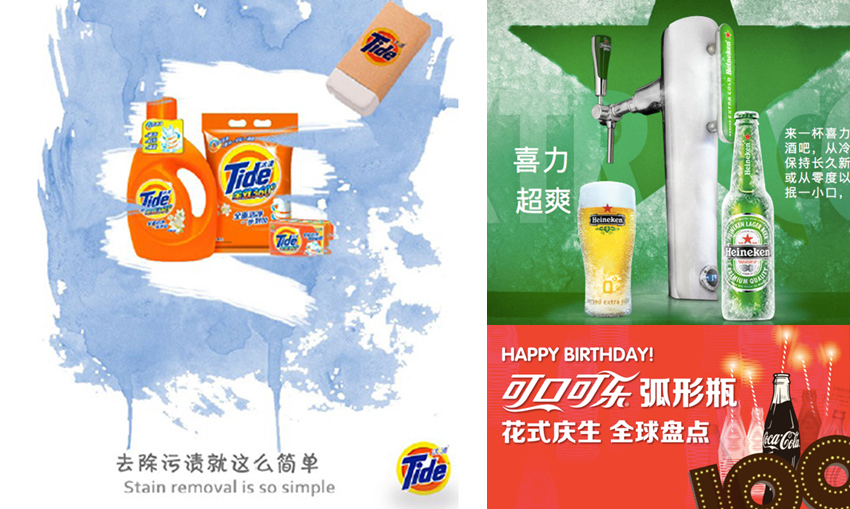 He told a cautionary tale of a luxury brand company that decided they didn't need a name in China. As a result, newspapers came up with their own competing versions of the same brand. At one point, people started to trademark those names. That's another reason why it's so important to create a Chinese version of your company name. If you don't do it, someone else will.
He told a cautionary tale of a luxury brand company that decided they didn't need a name in China. As a result, newspapers came up with their own competing versions of the same brand. At one point, people started to trademark those names. That's another reason why it's so important to create a Chinese version of your company name. If you don't do it, someone else will.
Challenge #2: Your Website and Marketing Collateral isn't Localized
One method of localizing all of your marketing collateral is to have it translated into Chinese. But that's not necessarily enough, Mr. Golden warns. The next step is to take the marketing collateral and give it to real Chinese marketing people and copywriters. Good copy is extremely important. Visuals are just as important as copy. While it isn't necessary to completely disregard the global brand, you do need to combine it with some amount of localization. The amount of localization depends on the market and the brand. For B2B companies, you want to strike the right amount of balance between global and local branding. (For an example of localized content, see the example in Challenge #4).Challenge #3: The Great Firewall of China
In terms of the web, China is a particular challenge to global brands, since it blocks many sites such as Google, Twitter and Facebook. Even if your site sits on the same server as a site China has decided to ban, your website page might not load. And according to Mr. Golden, this happens a lot. Make sure people can open and use your website to learn about your company and product.Challenge #4: Creating a Website with Clean White Space
According to Mr. Golden, the Chinese don't seem to appreciate the beauty of clean, white space on their homepages. He gives an example of an online trade magazine which shows the typical layout of many Chinese websites: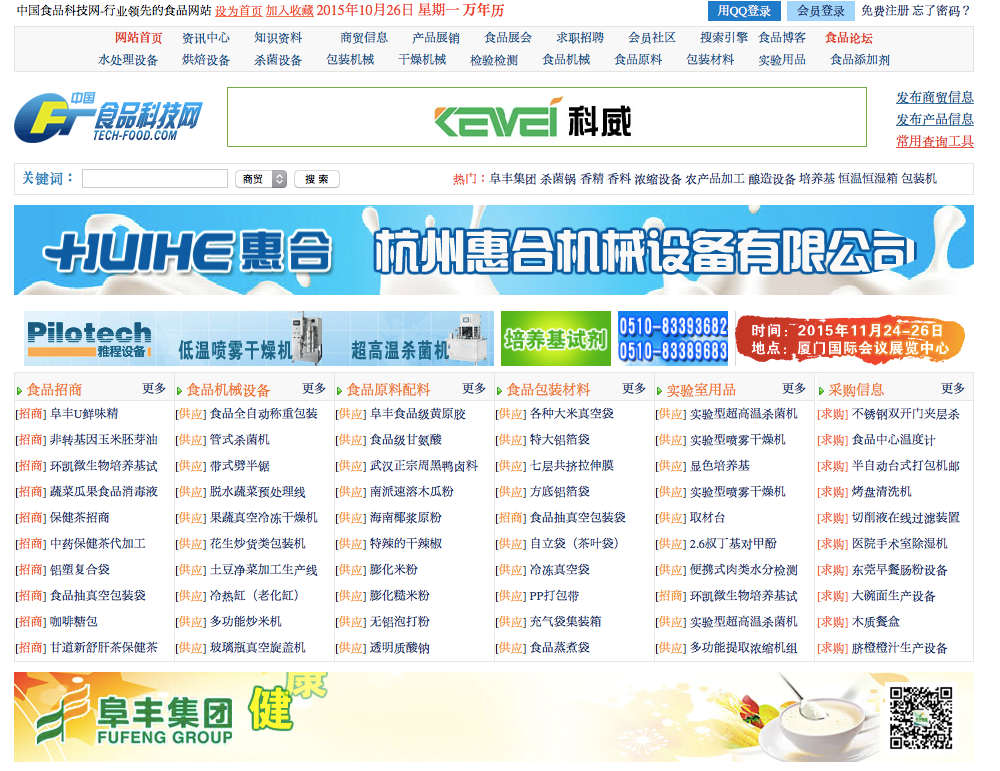 Fortunately, his company is successful at transforming Chinese versions of websites into clean, white homepages. One example he showed us was Lycored, a company specializing in food ingredients. They were able to localize the Chinese version of their website with images while at the same time create a nice, clean homepage:
Fortunately, his company is successful at transforming Chinese versions of websites into clean, white homepages. One example he showed us was Lycored, a company specializing in food ingredients. They were able to localize the Chinese version of their website with images while at the same time create a nice, clean homepage:
 "No one was talking about the threat of resistance. It was an invisible threat – but once it appeared, it was already too late. We gave this threat a face and a name, so people could start talking about it," Mr. Asset explained. "There's an old saying, `If you want to own the solution, you have own the problem.' So we were the ones to start talking about it."
They were also able to use a lot of red. Red is a very lucky color in China, Mr. Golden explained, so it was great that Lycored uses red.
"No one was talking about the threat of resistance. It was an invisible threat – but once it appeared, it was already too late. We gave this threat a face and a name, so people could start talking about it," Mr. Asset explained. "There's an old saying, `If you want to own the solution, you have own the problem.' So we were the ones to start talking about it."
They were also able to use a lot of red. Red is a very lucky color in China, Mr. Golden explained, so it was great that Lycored uses red.
Challenge #5: Distributing Your Content in China
Since China blocks all of the mainstream sites from the US, it has created Chinese alternatives. Your company will have to familiarize themselves with sites such as Baidu, WeChat, Weibo, and Youku and the differences between them and their US counterparts. The numbers on these sites and networks are huge, Mr. Golden says, but it can still be hard to reach the people. For instance, Baidu, he explains, uses a completely different algorithm than Google. Speed and number of pages are major factor, as are metatags and other factors that Google no longer takes into account. In addition, sites with more pages rank higher. From Mr. Golden's experience, sometimes companies will need to call Baidu personally in order to increase their website's loading time. Trade magazines are another excellent source for distributing content. They can offer cost-effective advertising opportunities, as well as paid advertorial opportunities. Advertising laws, however, are very strict. Any advertising consisting of experts that speak of benefits of a product must be cleared with the Chinese government beforehand or risk being fined.Successful Penetration of the Chinese Market
Mr. Golden ended his presentation by telling companies interested in entering the Chinese market to first ask themselves the following questions:- Is your brand ready to travel? If not, maybe go to a branding company (Oz or one of the E3 partners :P)
- Do you have a solid strategy? Don't go to China just to try it out.
- What are your priorities? Think especially in terms of your geography, people, and target markets.
- What marketing actions are right for your brand and your customers? Do you understand the media your customers are using?
- Do you have all the information you need? It takes talking to a lot of people to find out what's really going on.
Israel and R&D – an ongoing obsession
By
Orit Oz
, 01/05/2017
Israelis have a successful history with R&D and traditionally focused mainly on technology. But they’re slowly changing their focus from the what to the why.
min read
We all know that Israel is a high-tech capital with almost as many start-ups as Silicon Valley.
According to Rubicon Venture Capital, if we looked at the number of start-ups per capita, Israel might actually be number one.
But what makes Israelis so obsessed with R&D?
The answer is complex. But there definitely seem to be a few main reasons for this ongoing obsession.
- Israel is a melting pot of immigrants from multiple countries. These immigrants bring with them unique cultures, approaches and schools of thought, and when these spill over into their work environment, magic happens and innovation and creativity abound.
- Israel is a young country that faces constant challenges in the realms of security, agriculture, energy, and more. As a result, many Israeli companies focus on developing solutions to these problems and once they do this successfully, often export these solutions to the international market.
- Israel places a lot of value on education, and Israeli students are encouraged to focus on STEM subjects. Once they complete their high-school education, they are recruited by the Israeli Defense Forces (IDF) where these skills are nourished even further; and as a result, many young Israelis are snapped up by hi-tech companies as soon as they finish their military service or higher education.
- Israeli “chutzpa” or directness, and a belief in getting things done at all costs also contribute to a highly productive environment where efficiency comes before protocol.
- As part of a true belief in the power of technology as an industry changer, private and public funding bodies invest large sums in Israeli startups.
Traditional tendency for a product-centric approach
Israeli start-ups have definitely benefitted from their unique circumstances, and their innovations and out-of-the-box thinking provide global solutions for a broad range of issues and niches. However, as a result of this obsession with R&D, Israeli start-ups and hi-tech companies have traditionally been very product-centric. With such a strong belief in their technology, their main focus has been more on product features and benefits and less on the value that their products bring to their customers. But with digital disruption and the empowering of the customer, the focus is no longer on what we sell but rather on why we sell it.Focus on the why and not on the what
So the next step for Israeli hi-tech companies is to internalize this message and move over to a customer-centric model. According to an article by Forbes, transitioning over to a customer-centric model requires rethinking of the company’s marketing strategy as brands need to find ways to leverage their most important asset — their customers. This is a long-term process that requires research of existing customers to truly understand a company’s buyer personas, an understanding of the buyer journey and the channels used by potential buyers to interact with a company and its products, and a shift of mindset to stop thinking in terms of product and technology and start thinking in terms of customer needs.Why Marketing in Europe is Like a Polar Bear
By
Orit Oz
, 14/04/2017
There's no blueprint for the perfect European campaign, There's no list of boxes that you can check off. That's why marketing in Europe in like a polar bear
min read
Note: This is Part 1 of a 5-part series highlighting the speakers from our annual international B2B marketing conference this past November. Read the introductory post to this series here.
When our head of VP Strategy at Oz Branding, Dina Gidron, asked Dirk Assent, managing partner at Bernstein, Gmbh to talk about marketing in Europe at the B2B branding conference in November, he admits that he struggled to find material to talk about. "There's no blueprint for the perfect European campaign. There's no list of boxes that you can check off to find out if you're doing wrong or right in Europe. That's why today I'm going to talk to you about why marketing in Europe in like a polar bear," Mr. Assent announced.
Mr. Assent continued to explain that although life in Europe seems quite romantic and uncomplicated, this perception changes when we talk about the European Union.
He explained that although the term "union" implies that it works in coordination with other countries in a unified manner. In reality, the European Union is far from a unified entity, especially as a marketplace. To illustrate this point, he explained that the United States has 300 million people who are unified by the same language. Europe, in contrast, has 500 million people and 23 official languages.
"If you're doing business in Europe as a whole, you have to do whatever you do for the US times 23."
It's an oversimplified example, he admitted, yet it clearly presents the magnitude of the challenge of marketing in Europe.
"There's no blueprint for the perfect European campaign. There's no list of boxes that you can check off to find out if you're doing wrong or right in Europe. That's why today I'm going to talk to you about why marketing in Europe in like a polar bear," Mr. Assent announced.
Mr. Assent continued to explain that although life in Europe seems quite romantic and uncomplicated, this perception changes when we talk about the European Union.
He explained that although the term "union" implies that it works in coordination with other countries in a unified manner. In reality, the European Union is far from a unified entity, especially as a marketplace. To illustrate this point, he explained that the United States has 300 million people who are unified by the same language. Europe, in contrast, has 500 million people and 23 official languages.
"If you're doing business in Europe as a whole, you have to do whatever you do for the US times 23."
It's an oversimplified example, he admitted, yet it clearly presents the magnitude of the challenge of marketing in Europe.
 Discovering the Synergies between Different Countries (The Polar Bear Analogy)
Of course, language is only one of the many things dividing the countries. There are also vast social, legal and cultural differences. Instead of harping on these differences, Mr. Asset cautions, they need to be embraced. At the same time, you need to find the common denominator, or synergies, between the many countries.
When marketing in the European Union, he explained, you simply can't create a campaign that tells different groups of people the same story, uses the same pictures, and talks about the same issues.
"It doesn't work, because you aren't embracing the differences", he says. "You have to instead create a flexible structure that adapts to their needs."
At first glance, it seems quite contradictory to try to both embrace differences while adapting to different needs. How can we accomplish this in marketing?
In order to demonstrate how to accomplish this, he made an analogy of marketing in Europe to the anatomical design of a polar bear. At first, Mother Nature asked the polar bear what it wanted to look like, and he requested black skin in order to soak up the sun's rays. Later, the polar bear realized that it might be better to have white skin because there's a lot of snow, since if he's white he'll be protected from his enemies.
Amazingly, Mother Nature found a solution that takes both needs into account. Polar bears have black skins which soak up the sun's rays, and are stored by a layer of blubber underneath this skin. On top of this black skin, the polar bear has a layer of white fur that camouflages him in the snowy climate and helps to keep him safe from his enemies.
He even illustrated Mother Nature's idea of this flexible structure with a diagram of his own (We loved your diagram, Dirk!):
Discovering the Synergies between Different Countries (The Polar Bear Analogy)
Of course, language is only one of the many things dividing the countries. There are also vast social, legal and cultural differences. Instead of harping on these differences, Mr. Asset cautions, they need to be embraced. At the same time, you need to find the common denominator, or synergies, between the many countries.
When marketing in the European Union, he explained, you simply can't create a campaign that tells different groups of people the same story, uses the same pictures, and talks about the same issues.
"It doesn't work, because you aren't embracing the differences", he says. "You have to instead create a flexible structure that adapts to their needs."
At first glance, it seems quite contradictory to try to both embrace differences while adapting to different needs. How can we accomplish this in marketing?
In order to demonstrate how to accomplish this, he made an analogy of marketing in Europe to the anatomical design of a polar bear. At first, Mother Nature asked the polar bear what it wanted to look like, and he requested black skin in order to soak up the sun's rays. Later, the polar bear realized that it might be better to have white skin because there's a lot of snow, since if he's white he'll be protected from his enemies.
Amazingly, Mother Nature found a solution that takes both needs into account. Polar bears have black skins which soak up the sun's rays, and are stored by a layer of blubber underneath this skin. On top of this black skin, the polar bear has a layer of white fur that camouflages him in the snowy climate and helps to keep him safe from his enemies.
He even illustrated Mother Nature's idea of this flexible structure with a diagram of his own (We loved your diagram, Dirk!):

 "No one was talking about the threat of resistance. It was an invisible threat – but once it appeared, it was already too late. We gave this threat a face and a name, so people could start talking about it," Mr. Asset explained. "There's an old saying, `If you want to own the solution, you have own the problem.' So we were the ones to start talking about it."
Mr. Assent cautioned that this is only one way of marketing in Europe. Again, there is no official blueprint for marketing in the European Union, only thousands of examples, including this one. However, this was a successful example of how his company was able to create a flexible structure with a coherent message that allowed each individual country to continue to build upon that structure. Each country could change the theme, language, type of crop, and even the story, but the central concept would remain the same.
The end result of this marketing campaign? Bayer was successfully positioned as the leader and preferred partner in integrated weed management.
"No one was talking about the threat of resistance. It was an invisible threat – but once it appeared, it was already too late. We gave this threat a face and a name, so people could start talking about it," Mr. Asset explained. "There's an old saying, `If you want to own the solution, you have own the problem.' So we were the ones to start talking about it."
Mr. Assent cautioned that this is only one way of marketing in Europe. Again, there is no official blueprint for marketing in the European Union, only thousands of examples, including this one. However, this was a successful example of how his company was able to create a flexible structure with a coherent message that allowed each individual country to continue to build upon that structure. Each country could change the theme, language, type of crop, and even the story, but the central concept would remain the same.
The end result of this marketing campaign? Bayer was successfully positioned as the leader and preferred partner in integrated weed management.
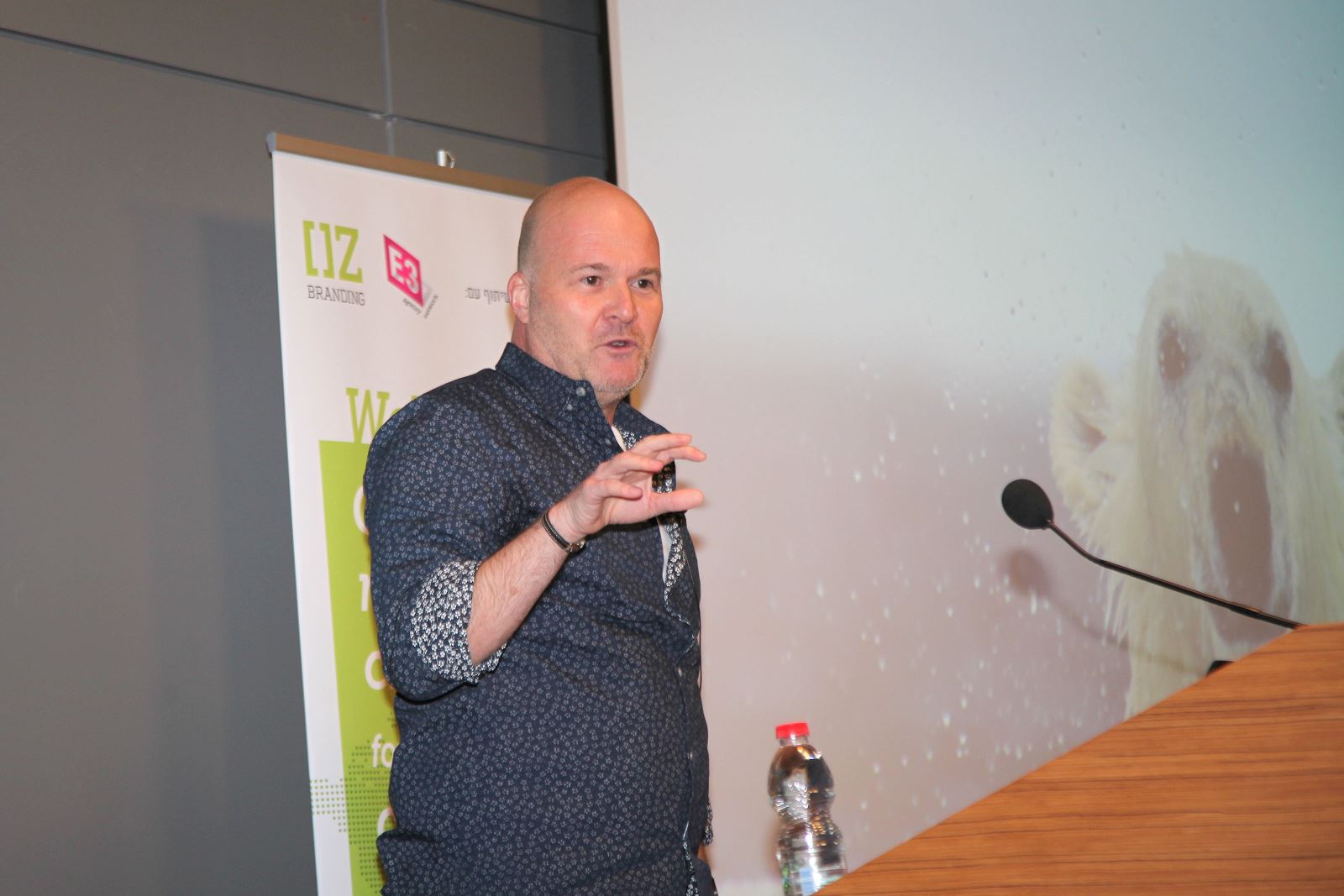 Discovering the Synergies between Different Countries (The Polar Bear Analogy)
Of course, language is only one of the many things dividing the countries. There are also vast social, legal and cultural differences. Instead of harping on these differences, Mr. Asset cautions, they need to be embraced. At the same time, you need to find the common denominator, or synergies, between the many countries.
When marketing in the European Union, he explained, you simply can't create a campaign that tells different groups of people the same story, uses the same pictures, and talks about the same issues.
"It doesn't work, because you aren't embracing the differences", he says. "You have to instead create a flexible structure that adapts to their needs."
At first glance, it seems quite contradictory to try to both embrace differences while adapting to different needs. How can we accomplish this in marketing?
In order to demonstrate how to accomplish this, he made an analogy of marketing in Europe to the anatomical design of a polar bear. At first, Mother Nature asked the polar bear what it wanted to look like, and he requested black skin in order to soak up the sun's rays. Later, the polar bear realized that it might be better to have white skin because there's a lot of snow, since if he's white he'll be protected from his enemies.
Amazingly, Mother Nature found a solution that takes both needs into account. Polar bears have black skins which soak up the sun's rays, and are stored by a layer of blubber underneath this skin. On top of this black skin, the polar bear has a layer of white fur that camouflages him in the snowy climate and helps to keep him safe from his enemies.
He even illustrated Mother Nature's idea of this flexible structure with a diagram of his own (We loved your diagram, Dirk!):
Discovering the Synergies between Different Countries (The Polar Bear Analogy)
Of course, language is only one of the many things dividing the countries. There are also vast social, legal and cultural differences. Instead of harping on these differences, Mr. Asset cautions, they need to be embraced. At the same time, you need to find the common denominator, or synergies, between the many countries.
When marketing in the European Union, he explained, you simply can't create a campaign that tells different groups of people the same story, uses the same pictures, and talks about the same issues.
"It doesn't work, because you aren't embracing the differences", he says. "You have to instead create a flexible structure that adapts to their needs."
At first glance, it seems quite contradictory to try to both embrace differences while adapting to different needs. How can we accomplish this in marketing?
In order to demonstrate how to accomplish this, he made an analogy of marketing in Europe to the anatomical design of a polar bear. At first, Mother Nature asked the polar bear what it wanted to look like, and he requested black skin in order to soak up the sun's rays. Later, the polar bear realized that it might be better to have white skin because there's a lot of snow, since if he's white he'll be protected from his enemies.
Amazingly, Mother Nature found a solution that takes both needs into account. Polar bears have black skins which soak up the sun's rays, and are stored by a layer of blubber underneath this skin. On top of this black skin, the polar bear has a layer of white fur that camouflages him in the snowy climate and helps to keep him safe from his enemies.
He even illustrated Mother Nature's idea of this flexible structure with a diagram of his own (We loved your diagram, Dirk!):
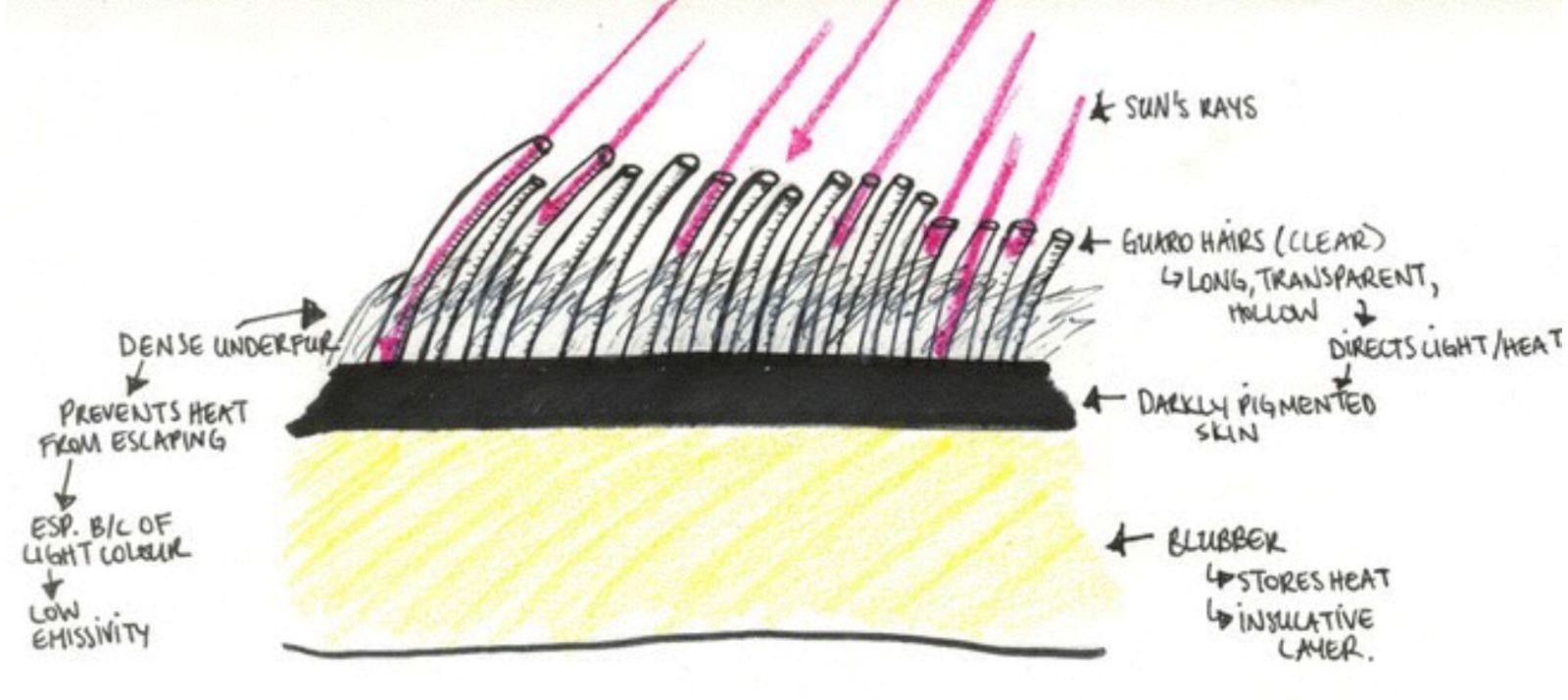
BayerCrop Science: Finding the Common Denominator for all Markets
One of his company's clients, BayerCrop Science, a major player in the herbicide market, offers a wonderful example of a marketing campaign that was successfully turned into a polar bear. Bayer is a company faced with a huge threat to the herbicide market: Resistance. Resistance is similar to the idea of immunity in medications; if a certain type of herbicide is used too much, it's useless in preventing weed growth. One simple solution to the problem is the use of rotation in certain herbicides. But this seemingly simple solution becomes very complicated to discuss in a marketplace such as the European Union. You have different crops in each country, in addition to different products, portfolios, product and trade structures, and topics. How did his company create a marketing campaign that would address the issue individually for each country, in a universal way? They decided to start with talking about the common denominator in each market. "No one was talking about the threat of resistance. It was an invisible threat – but once it appeared, it was already too late. We gave this threat a face and a name, so people could start talking about it," Mr. Asset explained. "There's an old saying, `If you want to own the solution, you have own the problem.' So we were the ones to start talking about it."
Mr. Assent cautioned that this is only one way of marketing in Europe. Again, there is no official blueprint for marketing in the European Union, only thousands of examples, including this one. However, this was a successful example of how his company was able to create a flexible structure with a coherent message that allowed each individual country to continue to build upon that structure. Each country could change the theme, language, type of crop, and even the story, but the central concept would remain the same.
The end result of this marketing campaign? Bayer was successfully positioned as the leader and preferred partner in integrated weed management.
"No one was talking about the threat of resistance. It was an invisible threat – but once it appeared, it was already too late. We gave this threat a face and a name, so people could start talking about it," Mr. Asset explained. "There's an old saying, `If you want to own the solution, you have own the problem.' So we were the ones to start talking about it."
Mr. Assent cautioned that this is only one way of marketing in Europe. Again, there is no official blueprint for marketing in the European Union, only thousands of examples, including this one. However, this was a successful example of how his company was able to create a flexible structure with a coherent message that allowed each individual country to continue to build upon that structure. Each country could change the theme, language, type of crop, and even the story, but the central concept would remain the same.
The end result of this marketing campaign? Bayer was successfully positioned as the leader and preferred partner in integrated weed management.





































